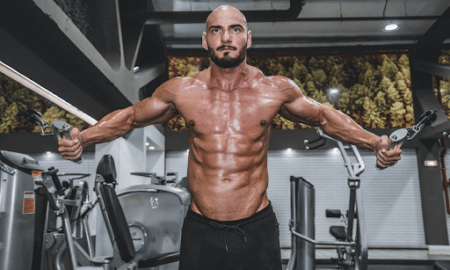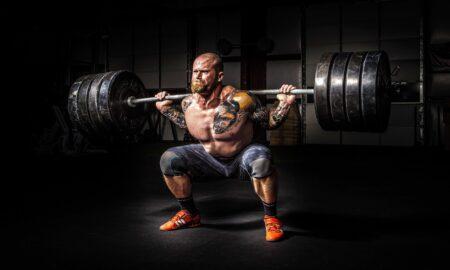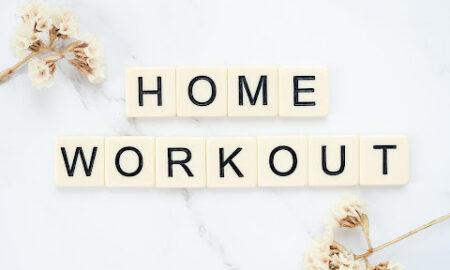Q: I’m a 14-year-old freshman in high school. I read that you started bodybuilding at age 14, and that got me thinking. I’ve always wanted to look like a bodybuilder, but since I am only 14 and not big, I thought it would be impossible. I still work hard and go to the gym three to four times a week. I put a lot of effort into working out, and I plan to end up looking like a bodybuilder. I wanted to know some of the things you went through when you started bodybuilding—for example, what exercises you did, your nutrition, how long it took to see noticeable results. Any information will be appreciated.
A: That’s a great question because I remember feeling a lot like you when I was your age. I remember looking at the bodybuilders in magazines, and it seemed impossible that I could ever develop my skinny body to look anything remotely close to the physiques I saw there. I recall the first time I saw a picture of Arnold; I honestly thought he was wearing a phony rubber suit. His muscles were so big, they didn’t look real.
It’s very important to look at the progress you make as an individual and not to dwell too much on how the bodybuilders in the magazines look. When I was 14, I’d actually get very depressed because I thought it was an impossibility to ever build my physique as big as guys like Arnold, Lou Ferrigno, Franco Columbu and Robby Robinson.
What made it even worse was that there were two guys in my high school—both my age—who had really impressive physiques. One guy, Greg Burda, was very bulky and thick, and the other guy, Ricky Kruz, was very muscular but also ripped, with definition and vascularity that were really unusual for a 14-year-old.
I was obsessed with developing big muscles, which made it hard to go to school every day and see those guys. Even more frustrating was that they were not as disciplined as I was. Greg would eat whatever he wanted, including junk food, and Ricky was known as a guy who liked to party. Meanwhile, I wouldn’t touch anything that had sugar in it. I was working out twice a day, six days a week, but I didn’t look nearly as good as they did.
It was around that time that I read an article about genetics. The author stated that only about one in 100,000 individuals had the genetics to actually become a champion bodybuilder. He clearly stated that it wasn’t just dedication or discipline that enabled you to develop a Mr. Universe physique. It was something that you had no control over: your genetics. Basically, he said, if you weren’t born to be a bodybuilder, you were screwed.
Reading that article made me even more depressed. I figured that the reason I was so skinny was because of poor genetics. It didn’t matter how hard I worked; I’d never be able to develop my body to look like the impressive physiques of the bodybuilders I admired in the magazines. I also thought that Greg and Ricky were blessed with those rare genetics, and that’s why they were able to attain such advanced development without putting in the same hard work I did.
After my freshman year of high school, I read an article written by Arnold Schwarzenegger. The topic was the power of the mind. Arnold talked about how he used positive thinking and visualization to create his championship physique. He also mentioned other bodybuilders, such as Franco Columbu and Frank Zane, who didn’t appear to have the genetics for bodybuilding when they began training. Each, however, eventually went on to win the Mr. Olympia title by believing in himself and being persistent with training and nutrition.
Arnold’s article changed my attitude. I started to believe in myself more and began to think much more positively. I also started to look forward to workouts because I was anticipating great progress and working on building my own Mr. Universe physique. It also helped that I was on summer break, which meant I wasn’t seeing the advanced physiques of my classmates on a daily basis.
That was a magic summer for me because I made so much progress in my development and learned the value of positive thinking. The mind is powerful, and it can work for you or against you, depending on how you think.
At the end of that summer, I had my brother Don take some pictures of me. I copied the poses that I saw my favorite bodybuilders do in the magazines, such as the front double-biceps, front lat spread, side chest, most muscular, back double-biceps and lat spread.
When I examined the pictures, I could see that I had some potential for bodybuilding. I had wide shoulders and a big rib cage, so I knew I had the structural foundation for building a good physique. I also took note of several muscle groups that grew easily and were strong points, such as my biceps and my lats.
The pictures enabled me to see what I needed to work on. I could tell that my triceps weren’t as developed as my biceps. I also needed to work on my lateral-deltoid heads to develop the caps of my shoulders. Finally, my legs were behind my upper-body development because I didn’t work my legs as hard during my first year of training.
Another important thing I learned about my young physique from the pictures we took was that I had good long-term genetics. I could see that I had a good structure and good shape in several of my bodyparts (peaked biceps, wide and low lats and pecs and good abs). I just needed to add more muscle all over my physique, and I knew that would take time because I was naturally skinny and not muscular—more ectomorphic than mesomorphic. It gave me hope, however, that the best was yet to come and that had a remarkable change on my attitude.
Taking pictures of your physique every few months is a great way to motivate yourself to train hard and make progress. If you know that you have to take some pictures on a certain date, you’ll train harder to make gains in time for your deadline. The pictures will also provide you with the feedback you need to analyze your physique and figure out which muscle groups you need to improve.
My training routine when I started working out was a little too advanced for my experience. Initially I followed the routine that Arnold used when he trained for the Mr. Olympia competition. That meant I was training six days a week, twice a day. I got up early in the morning and worked out before I went to school, and then I worked out again at night when I got home.
Although I was obviously overtraining, I still gained 20 pounds of muscle in that first year. I was only 135 pounds at 14 when I started high school, but by the end of the following summer, I was up to 155 pounds.
It was around that time that I read another article by Arnold. He said that he trained only four days a week in the off-season when he was trying to add more size. Three months out from a contest, he would increase his training to six days a week, twice a day. His precontest routine was for refining his physique, while his off-season program was designed to add more muscle.
I immediately changed my routine to training only four days a week. Because I trained at home for the first two years, my leg workouts were pretty limited—but I trained my upper body very hard. My dad even installed a big metal pipe in the hallway of our house so I could do wide-grip chins to build my lats.
As for my nutrition, I didn’t know as much about it then as I would eventually learn, but I knew what was good to eat and what to stay away from. I was very strict about not touching anything that had sugar in it. I didn’t eat junk food at all the first couple of years when I started bodybuilding.
I ate a lot of protein—beef, tuna, eggs, chicken—as well as plenty of complex carbohydrates, like whole-wheat bread, baked potatoes and oatmeal. My metabolism was so fast when I was young that I had to eat a lot of food to gain weight. The supplement industry was in its infancy back then, so there weren’t many good protein powders available. I relied mostly on good food to build my physique.
My advice to you would be to stay positive and focus on your own progress. Begin by taking pictures of yourself hitting several of the bodybuilding poses. Also take measurements of the key areas of your physique: chest, waist, arms, thighs, calves, forearms and neck. Update the measurements once a month, and take new pictures every three months so you can measure your progress.
Keep your training days limited to three to four a week so you can recuperate and grow. Eat six meals a day, with each meal containing a complete form of protein—eggs, beef, chicken, fish, turkey, milk, cheese—and a complex carbohydrate—oatmeal, whole wheat or Ezekiel bread, potatoes, rice, pasta. Add protein drinks between meals—a weight-gaining protein powder like Optimum Nutrition’s Pro Complex Gainer is a great choice—and you’ll be on your way to developing your own championship physique. Good luck!
Q: Over the years I’ve heard several renowned bodybuilders discuss calf training, and one of the things they always recommended was to train calves after a quad and hamstring workout to keep the blood flowing through the legs. After thinking about it, however, I’m wondering, wouldn’t it be counterproductive for the calves to be trained after legs because the blood in the legs is carrying away the lactic acid from the thighs, thereby limiting the blood flow to the calves and not letting you achieve the maximum stress from calf work?
A: I’ve always separated my workouts for thighs and calves. I understand the theory that you’d get a much better pump by training calves immediately after thighs, but I’m not sure how effective that calf workout would be.
Leg training is probably the hardest workout you can do in the gym. The thighs are extremely powerful muscles, and they need a tremendous amount of resistance in order to grow. The legs also respond to higher repetitions, so the combination of heavy weight and high reps is brutal.
If you train legs properly, you should be completely wiped out after a leg workout. I have only enough energy to stumble out of the gym after one. I don’t train any other muscle groups after legs because I don’t feel I could have an effective workout for those muscles.
I tried training calves after upper legs, but my legs were so wiped out that they were shaking with exhaustion as I tried to do my calf work. It didn’t take me long to realize that I should train calves at a different workout if I really wanted to get them to grow.
I currently work my calves twice a week—with chest and triceps and then three days later with deltoids and traps. I do two exercises at each calf workout, three to four sets per exercise. Here are the calf workouts I use:
Workout 1 (with chest and triceps)
Seated calf raises 4 x 20, 15, 12, 12
Standing calf raises 4 x 12, 10, 8, 8
Workout 2 (with deltoids and traps)
Donkey calf raises 4 x 15-20
Leg press calf raises 3-4 x 12, 10, 10
Editor’s note: John Hansen has won the Mr. Natural Olympia and is a two-time Natural Mr. Universe winner. Check out his Web site at www.NaturalOlympia.com, or send questions or comments to him via e-mail at [email protected]. Look for John’s DVD, “Natural Bodybuilding Seminar and Competitions,” along with his book, Natural Bodybuilding, and his training DVD, “Real Muscle,” at his Web site or at Home Gym Warehouse, www.Home-Gym.com. Listen to John’s new radio show, “Natural Bodybuilding Radio,” at www.NaturalBodybuildingRadio.com. You can send written correspondence to John Hansen, P.O. Box 3003, Darien, IL 60561. IM




















You must be logged in to post a comment Login